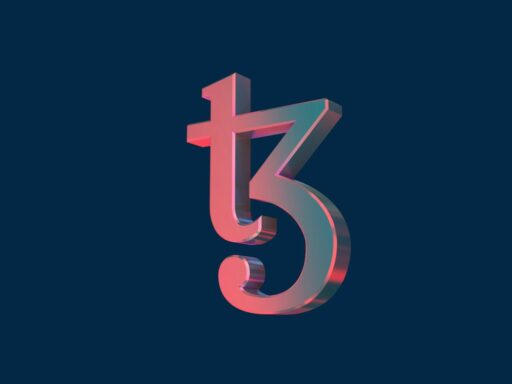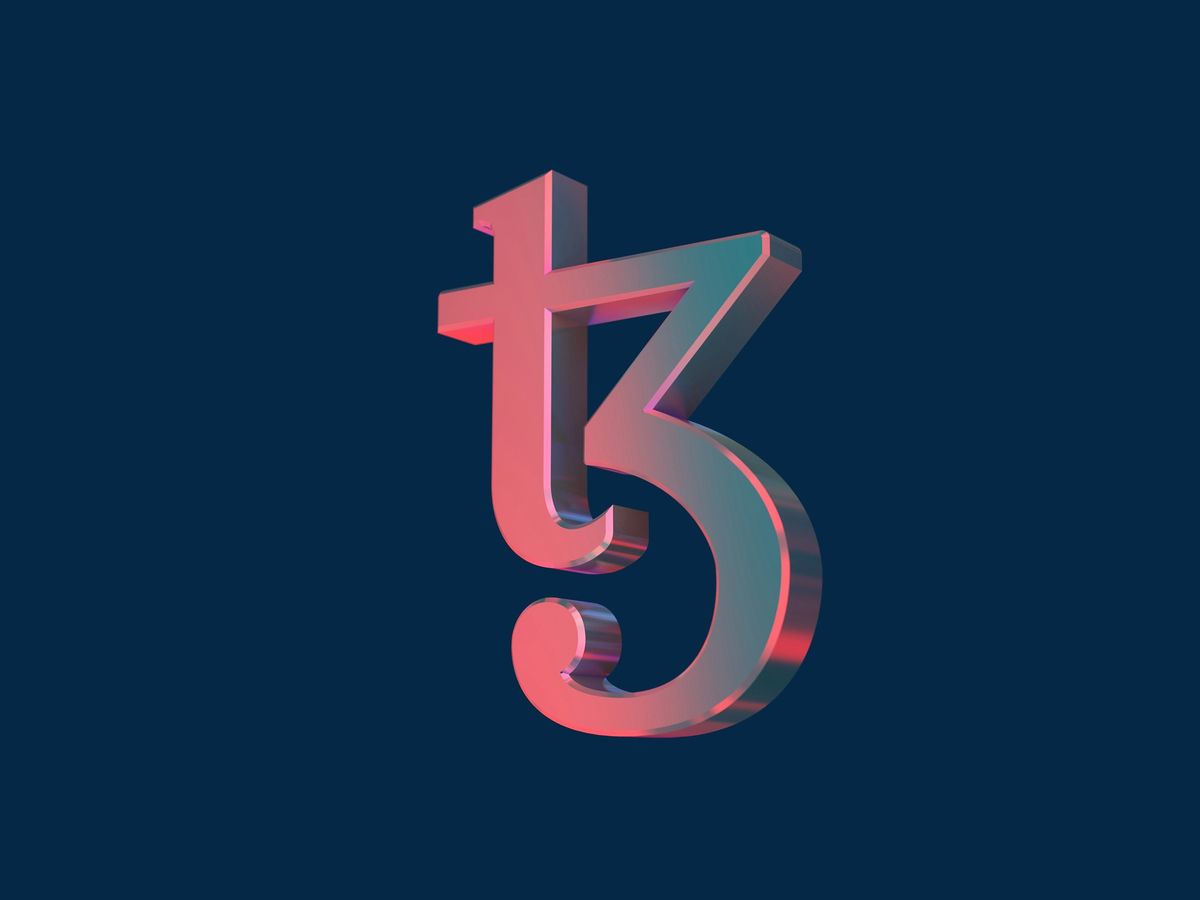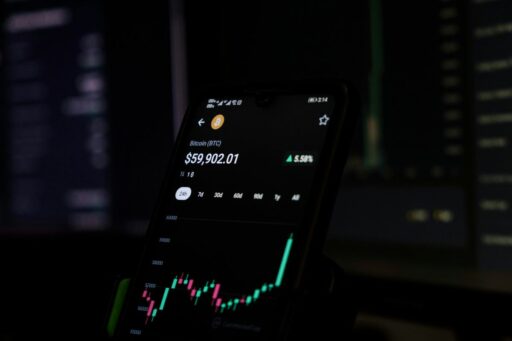The landscape of cryptocurrency trading is dominated by a few key players that have established themselves as the most reliable and user-friendly gateways for investors and traders. This article explores the largest crypto exchanges, their unique features, and their roles in facilitating access to the digital currency market. We will delve into the intricacies of Binance, Coinbase, Kraken, and others, to understand what makes them the go-to platforms for crypto enthusiasts around the world.
Key Takeaways
- Binance is the largest crypto exchange, known for its high order processing speed and appeal to both professionals and enthusiasts.
- Coinbase offers a user-friendly platform ideal for beginners, while Kraken provides robust security features for more experienced traders.
- The choice between centralized, decentralized, and peer-to-peer exchanges is pivotal, depending on the user’s needs for security, convenience, and control.
- Gate.io sets a standard for exchange security by using a combination of centralized and decentralized methods to protect user assets.
- As the market evolves, crypto exchanges are adapting to new technologies, regulatory changes, and user demands, shaping the future of digital currency trading.
Navigating the Giants of Crypto Trading

Binance: The Behemoth of Order Processing
Binance Exchange has firmly established itself as the world’s largest cryptocurrency exchange, boasting an impressive capability to process more than 1.4 million orders per second. This remarkable throughput has made it a go-to platform for a wide spectrum of users, from casual enthusiasts to professional traders who demand efficiency and speed.
Binance’s commitment to innovation is reflected in its support for over 600 cryptocurrencies, catering to a diverse market with varying needs. Despite its comprehensive offerings, the platform maintains competitive low trading fees and a variety of deposit options, setting it apart in a crowded marketplace.
However, Binance is not without its challenges. The platform’s sophisticated interface may present a steep learning curve for new users, which can limit its appeal to the broader crypto community. For those willing to navigate its complexities, Binance provides a robust trading environment with advanced security measures to safeguard digital assets.
Coinbase: The User-Friendly Gateway for Beginners
Coinbase stands out as a beacon for newcomers in the complex world of cryptocurrency trading. Established in 2012, it has been pivotal in ushering in a wave of adoption by offering a platform that balances simplicity with functionality. Coinbase’s intuitive interface and educational resources significantly lower the barrier to entry for first-time investors.
The exchange supports a variety of payment methods, making the purchase of digital currencies accessible and convenient. Here’s a quick overview of what makes Coinbase a go-to choice for beginners:
- Simplified buying process
- Secure wallet for digital asset storage
- Advanced trading tools like limit orders and charting
- A live order book for real-time market tracking
Coinbase’s commitment to user experience is evident in its design and service offerings, which cater to the needs of those new to the crypto space.
With more than 8.9 crore verified users across 100 countries, Coinbase’s reach is a testament to its success as a user-friendly gateway. The platform not only facilitates easy trading but also ensures that digital assets are securely stored offline, providing peace of mind to its users.
Kraken: Security and Robust Features for Traders
Kraken stands out as a pinnacle of security in the crypto exchange landscape. Established in 2011, it has become a go-to platform for those who prioritize safety and a comprehensive suite of trading tools. With over 200 cryptocurrencies available, Kraken caters to a diverse audience, from beginners to institutional investors.
The exchange is renowned for its robust security measures, including extensive cold storage of assets and mandatory two-factor authentication. These features, coupled with Kraken’s adherence to regulatory compliance, make it a trusted name among exchanges.
Kraken’s platform is not only about security; it also offers a user-friendly experience with 24/7 customer service, making it accessible even to those new to the world of crypto trading.
Kraken’s commitment to providing a secure and feature-rich trading environment is evident in its continuous efforts to enhance user experience and maintain regulatory standards. For traders looking for a reliable and advanced platform, Kraken presents a compelling choice.
Understanding the Different Types of Crypto Exchanges

Centralized vs. Decentralized Exchanges
In the dynamic world of cryptocurrency trading, exchanges are the pivotal platforms where transactions take place. Centralized exchanges are akin to traditional financial institutions, acting as intermediaries in the trading process. They offer a range of services, including staking and lending, and are known for their user-friendly interfaces and robust security measures.
On the other hand, decentralized exchanges (DEXs) operate without a central authority. Trades on DEXs are executed via smart contracts directly on the blockchain, providing a more peer-to-peer approach and appealing to those who value privacy and control over their transactions.
- Centralized exchanges often provide higher liquidity and faster transaction speeds.
- Decentralized exchanges offer greater privacy and direct control over trades.
- Centralized exchanges may offer additional services like staking and lending.
- Decentralized exchanges typically have lower fees and are less susceptible to hacking.
Choosing the right type of exchange depends on your trading preferences, desired level of control, and the importance you place on security and additional services.
Fiat to Crypto Exchanges: A Starting Point for New Investors
Fiat to Crypto exchanges serve as the initial touchpoint for many entering the world of digital currency. These platforms facilitate the direct purchase of cryptocurrencies using traditional money, such as dollars or euros, making them an ideal choice for those new to the crypto space. Ease of use and accessibility are key features that make these exchanges particularly appealing to beginners.
- Ease of Use: Simplified interfaces and straightforward purchase processes.
- Accessibility: Wide availability of popular cryptocurrencies for purchase with fiat.
- Support: Dedicated customer service to assist new users.
Fiat to Crypto exchanges demystify the initial steps into cryptocurrency, providing a clear path from traditional currency to digital assets.
It’s important to consider the fees and security measures when choosing a fiat to crypto exchange. While some may offer competitive rates, others prioritize robust security protocols to protect users’ investments. Here’s a quick overview of what to look for:
- Fees: Compare transaction and withdrawal fees across different platforms.
- Security: Look for exchanges with strong security measures, such as two-factor authentication and cold storage of assets.
- Reputation: Research user reviews and regulatory compliance to gauge trustworthiness.
Selecting the right exchange is a crucial step that can influence your trading experience and the safety of your funds. As you embark on your investment journey, prioritize exchanges that align with your needs for support, cost-efficiency, and security.
Peer-to-Peer Exchanges: Direct Trading Simplified
Peer-to-peer (P2P) exchanges offer a unique approach to buying and selling cryptocurrencies by directly connecting buyers and sellers. Unlike traditional centralized exchanges, P2P platforms often provide a more personalized trading experience. LocalBitcoins is a prime example of a P2P platform that has been facilitating Bitcoin trades since 2012, emphasizing a user-centric approach.
While P2P exchanges offer the advantage of direct transactions, they also typically include an escrow service to mitigate counterparty risk. This service ensures that the seller’s cryptocurrency is securely held until the transaction is confirmed, protecting both parties involved.
P2P exchanges blend the personal touch of direct trading with the security of an escrow service, striking a balance between autonomy and safety in transactions.
Some popular P2P cryptocurrency exchanges include:
- OKX
- Binance
- KuCoin
- LocalBitcoins
It’s important to understand the common fees associated with P2P exchanges, such as trading fees, which can vary depending on the platform and the specifics of the transaction.
The Importance of Security in Crypto Exchanges

How Exchanges Protect Your Digital Assets
Cryptocurrency exchanges are the fortresses that safeguard your digital treasures. Security measures are not just a feature but a necessity in the realm of digital currency trading. Exchanges employ a variety of strategies to protect user assets, including:
- Two-factor authentication (2FA), adding an extra layer of security beyond just a password.
- Cold wallet storage, where the bulk of funds are kept offline, away from potential online threats.
- Encryption to shield sensitive data from unauthorized access.
- Multi-signature withdrawal processes that require multiple approvals before transactions can be executed.
It’s essential to recognize that the responsibility for security also lies with the user. Regularly updating passwords, using secure wallets, and staying informed about regulatory compliance are critical steps in ensuring the safety of your investments.
While exchanges like Coinbase and Binance offer robust security features, it’s important to remember that no system is impervious. As a user, understanding the security protocols in place and adhering to best practices can significantly reduce the risk of loss. After all, in the event of a crypto exchange becoming insolvent, as a wallet holder, you can argue that the exchange is simply a custodian of your assets, and ownership remains with you.
The Role of Regulation in Exchange Security
Regulatory compliance is a critical aspect of exchange security, providing a framework that ensures the integrity and stability of trading platforms. The Securities and Exchange Commission and other regulatory bodies play a pivotal role in overseeing and enforcing standards that protect investors and maintain fair markets.
- Stay informed about the regulatory landscape surrounding cryptocurrency exchanges.
- Choosing platforms that comply with relevant regulations adds an extra layer of protection.
- Prioritizing the security of your Bitcoin holdings is paramount, regardless of the exchange.
Security ranks high in crypto trading, and adhering to regulations is a key component in safeguarding digital assets.
While security features such as two-factor authentication and cold wallet storage are essential, the role of regulation cannot be understated. It is the backbone that supports these technical measures, ensuring that they are implemented in a manner consistent with legal and ethical standards.
Gate.io: Balancing Centralized and Decentralized Protection
Gate.io stands out as a pioneer in the crypto exchange landscape, having invested millions into security and legal funds to safeguard user assets. This dual approach combines the efficiency of centralized protection with the resilience of decentralized methods. Gate.io’s commitment to security is evident in its long-standing operation since 2013, ensuring a stable and reliable platform for traders.
- Centralized Protection: Gate.io utilizes advanced technology to provide a robust trading system, with the added convenience of instant deposits and withdrawals.
- Decentralized Methods: Adherence to regulations and a strict policy against market manipulation reflect Gate.io’s dedication to fair and secure trading practices.
Gate.io exceeds expectations by continuously exploring new technologies to enhance the trading experience, making it a preferred choice for those seeking a balance of innovation and security.
With a focus on both centralized and decentralized protection, Gate.io has established itself as a trustworthy exchange that prioritizes user safety without compromising on trading efficiency.
Choosing the Right Exchange for Your Trading Needs

Assessing User Interface and Experience
When venturing into the realm of digital currency trading, the user interface (UI) and overall user experience (UX) of a crypto exchange are pivotal factors that can significantly influence your trading success. A well-designed UI should offer intuitive navigation and easy access to essential features, allowing traders to execute transactions efficiently and without confusion.
- Prioritize Individual Requirement
- Evaluate Each Option
- Seek Advanced Features
For instance, consider the layout of a typical exchange platform:
- Simulator: For practicing trades without risk.
- Banking: To manage fiat transactions and balances.
- Personal Finance: Tools for budgeting and saving.
A seamless user experience coupled with radical transparency and an innovative culture can empower traders to retain a larger portion of their earnings, as seen with platforms like WOO X that boast superior trade execution.
Evaluating Trading Tools and Features
When selecting a crypto exchange, the array of trading tools and features offered can significantly impact your trading experience and success. Advanced traders often seek platforms with a comprehensive suite of technical analysis indicators and charting tools to execute complex strategies. For instance, Interactive Brokers is known for its robust selection of these tools, along with competitive trading fees.
On the other hand, social trading platforms like eToro cater to those who prefer a community-driven trading experience. Meanwhile, investors focusing on crypto ETFs may find Fidelity’s offerings to be the best fit. It’s crucial to evaluate each option based on your specific trading needs and expertise level.
The right set of tools can enhance decision-making and potentially increase profitability in the volatile world of crypto trading.
Considering Liquidity and Trading Volume
When selecting a crypto exchange, liquidity and trading volume are critical factors to consider. High liquidity ensures that trades can be executed quickly and at stable prices, minimizing the risk of slippage. Trading volume, on the other hand, reflects the activity level of an exchange and can be an indicator of its reliability and popularity.
For instance, exchanges like Binance and Coinbase are known for their high trading volumes, which can provide a more seamless trading experience. It’s also worth noting that some platforms offer unique features such as liquidity aggregation, which can enhance trading efficiency.
Trading fees and minimum investment requirements are also important to consider alongside liquidity and trading volume.
Here’s a quick overview of what to look for in terms of liquidity and trading volume:
- Presence of a large number of active traders
- High number of spot pairs and futures symbols
- Low risk of slippage
- Trading volume indicators such as the On-Balance Volume Parameter
Remember, a platform’s trading volume can also be a reflection of its security measures and user trust.
The Future of Crypto Exchanges in the Evolving Market

The Rise of New Platforms and Technologies
The crypto exchange landscape is continuously evolving with the introduction of new platforms and technologies. These innovations are not only changing the way we trade digital currencies but are also shaping the future of financial transactions.
- Blockchain advancements are enhancing security and transparency.
- Artificial Intelligence (AI) is being integrated to provide smarter analytics and trading bots.
- Cloud Computing is enabling more scalable and resilient infrastructure.
- Internet of Things (IoT) devices are starting to play a role in managing assets and executing trades.
The integration of these technologies ensures that the crypto exchanges of tomorrow will be more robust, user-friendly, and accessible to a global audience.
As these technologies mature, they promise to bring about a more inclusive and efficient trading environment, catering to the needs of both novice and experienced investors. The goal is to create a comprehensive guide to cryptocurrency trading that is both secure and easy to navigate.
Adapting to Regulatory Changes Globally
As the crypto market matures, exchanges are increasingly facing a complex regulatory environment. This landscape is constantly evolving, with governments around the world developing frameworks to ensure investor protection and market integrity. Adapting to these changes is not just about compliance; it’s about maintaining trust and stability in the platform.
The agility of an exchange in responding to regulatory changes can be a significant factor in its long-term success.
For traders, staying informed about regulatory compliance is crucial. It’s important to choose platforms that adhere to relevant regulations, as this adds an extra layer of protection and ensures that trading activities are within legal parameters. Below is a list of best practices for traders to consider:
- Prioritizing the security of digital assets
- Enabling two-factor authentication
- Using secure wallets
- Regularly updating passwords
- Monitoring policy and public interest developments
In conclusion, while regulatory changes can be challenging, they also present opportunities for exchanges to demonstrate their commitment to security and for traders to reinforce their trading strategies within a secure and legal framework.
Predicting Trends in Crypto Exchange Innovations
As the crypto exchange landscape evolves, new trends are emerging that could shape the future of digital currency trading. The continuous innovation in this sector is driven by the need to enhance user experience, improve security, and adapt to regulatory changes.
- User Experience: Exchanges are likely to focus on simplifying the trading process, making it more accessible to a broader audience. Expect to see more intuitive interfaces and features that cater to both novice and experienced traders.
- Security: With the increasing importance of cybersecurity, exchanges will continue to develop and implement cutting-edge security measures to protect users’ assets.
- Regulatory Compliance: As governments around the world tighten regulations, exchanges will evolve to ensure compliance, while still offering a seamless trading experience.
- Technological Advancements: The integration of new technologies such as AI, machine learning, and blockchain improvements will be key in offering innovative services and features.
The quest for the optimal balance between user-friendliness, security, and regulatory compliance will remain at the forefront of exchange innovation. This balance is crucial for maintaining trust and facilitating the growth of the cryptocurrency market.
The anticipation of these trends is not just speculation; it is based on the current trajectory of the industry and the demands of its users. As we look to the future, it is clear that exchanges will continue to play a pivotal role in the crypto ecosystem.
Conclusion
In the dynamic and ever-evolving world of cryptocurrency, exchanges play a pivotal role as the primary gateways for trading digital currencies. From the unparalleled processing speed of Binance to the user-centric design of Coinbase, each platform offers unique features catering to a diverse range of traders and investors. As we have explored the top exchanges, it’s clear that whether you seek advanced trading tools, robust security measures, or a user-friendly experience, there is an exchange that fits your needs. The key is to prioritize your requirements, such as security, ease of use, and regulatory compliance, to make an informed decision. As the crypto landscape continues to mature, these exchanges will undoubtedly refine their offerings, further enhancing the trading experience for users worldwide.
Frequently Asked Questions
What factors should I consider when choosing a cryptocurrency exchange?
When selecting a cryptocurrency exchange, consider factors like security measures, user interface, trading tools, liquidity, trading volume, fees, regulatory compliance, and customer support.
What is the difference between centralized and decentralized crypto exchanges?
Centralized exchanges are managed by a single organization providing security and convenience, while decentralized exchanges operate on a blockchain network allowing peer-to-peer transactions without intermediaries.
How do exchanges like Binance and Coinbase differ in their approach?
Binance caters to professional traders with its high order processing speed and complex tools, while Coinbase is known for its user-friendly platform that is well-suited for beginners.
What security measures do exchanges like Gate.io use to protect user assets?
Gate.io uses a combination of centralized and decentralized methods to protect funds, including security and law funds for additional asset protection.
Are there any crypto exchanges that are particularly good for beginners?
Coinbase is often recommended for beginners due to its user-friendly interface and straightforward purchase process, making it easier for those new to cryptocurrency trading.
What are the implications of regulatory changes on crypto exchanges?
Regulatory changes can impact how exchanges operate, their security protocols, the cryptocurrencies they can offer, and can also affect user privacy and transaction reporting requirements.





